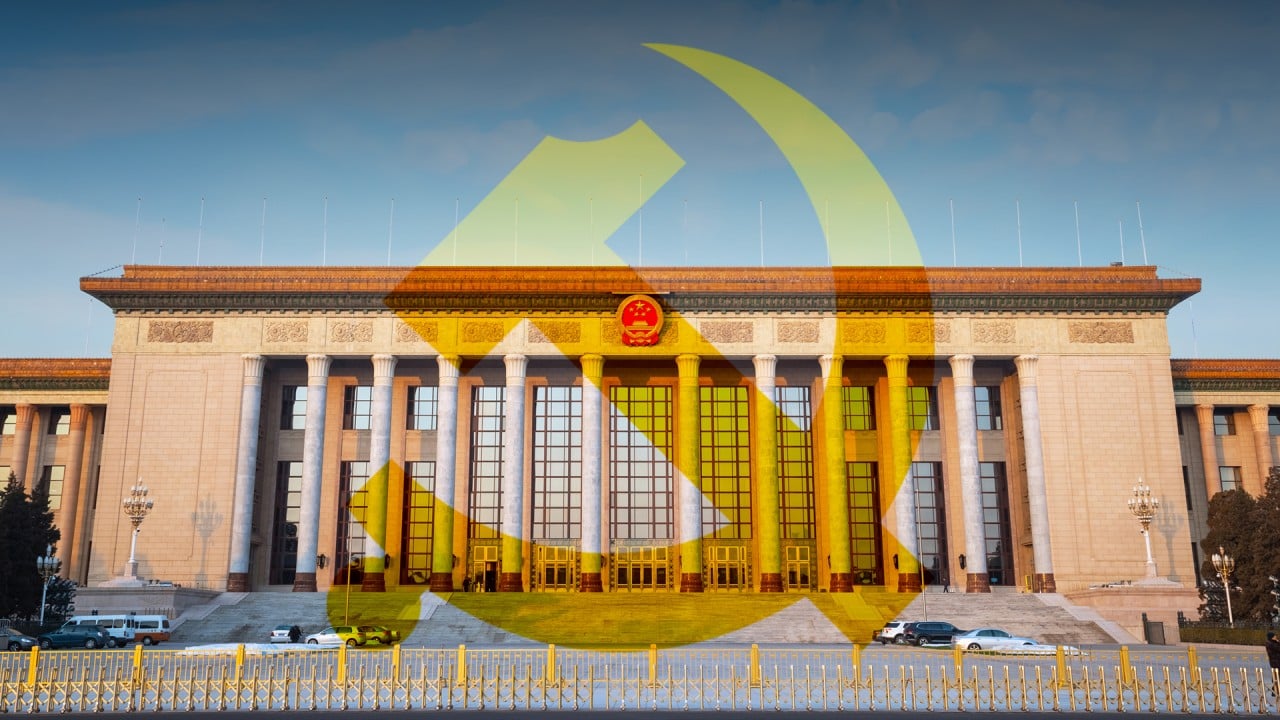
China to cut reserve requirement ratio for second time this year to boost economic growth amid strong headwinds
- PBOC decision comes only three days after Premier Li Keqiang said China would cut the RRR ‘at an appropriate time’
- Move comes amid signs that China’s economic growth is slowing, while a downturn in the property market appears imminent
China’s central bank has announced its second reserve ratio cut this year to shore up the economy, as the nation’s leaders prioritise stability ahead of a key political meeting next year.
Ensuring economic and social stability has moved to the top of Beijing’s agenda in the lead-up to next year’s political gathering that will usher in a leadership reshuffle, and the central government has been signalling more policy easing.
China on high alert for monetary policy changes from US and EU
In a statement issued after its meeting on Monday, the Communist Party’s 25-member Politburo, China’s primary decision-making body chaired by President Xi Jinping, said the country will “put the word of stability as the top priority” in its economic decision-making for 2022.
The statement also removed some optimistic wording that followed an economy-focused meeting in July, when the Politburo said “the economy continues to recover steadily, with a stable performance and good momentum for growth”. The omission came as Beijing has recently been sounding the alarm on “new downward pressure” on China’s economy.
“[We should] continue to improve people’s livelihood, strive to stabilise the macroeconomy, keep the economy running within a reasonable range, maintain overall social stability, and welcome the successful convening of the 20th CPC National Congress,” Monday’s statement said, according to the Xinhua News Agency.
The upcoming RRR cut by the People’s Bank of China (PBOC) will allow most banks to maintain a reduced average ratio of 8.4 per cent, while small banks that now have a lower reserve ratio of 5 per cent will be excluded.
The announcement came only three days after Premier Li Keqiang said China would cut the RRR “at an appropriate time”, during a virtual meeting with International Monetary Fund Managing Director Kristalina Georgieva on Friday.
When chairing a symposium with non-party members on Thursday, President Xi also called on the country to coordinate its pandemic control measures with its economic needs to ensure social stability ahead of the 20th party congress.
“The 20th CPC National Congress will be held next year, and it is a major event in the political life of the party and the state. At present, the economic situation at home and abroad is still complicated,” Xi said at the symposium, according to Xinhua.
China’s new generation of leaders will have to pass ‘the loyalty test’
In the lead-up to this week’s conference, there has been debate among economists and officials as to whether Chinese authorities should fortify the country’s infrastructure, and perhaps moderately loosen policy and ease up on cooling measures in the real estate sector.
The statement following Monday’s Politburo meeting also omitted a previously used saying – “houses are for living in, not for speculation – referring to Beijing’s strong regulation of the sector.
Instead, the statement emphasised the need to “promote the healthy development and virtuous circulation of the real estate industry”.
The PBOC adheres to the normal monetary policy … and will not flood the economy with credit
The PBOC said that the overall RRR cut was to fortify a “cross-cycle adjustment” of macroeconomic policies – a catchphrase that represents a long-term view to inject liquidity support into the economy in advance, to cope with potential challenges ahead.
“[China’s] prudent monetary policy direction has not changed,” the PBOC said in a separate statement on the upcoming RRR cut, calling it “a regular action of monetary policy”.
“The PBOC adheres to the normal monetary policy, maintains the continuity, stability and sustainability of the policy, and will not flood the economy with credit,” the statement said, adding that the PBOC will “create suitable monetary and financial conditions for high-quality development and supply-side structural reform”.
The statement also noted that the RRR cut will increase the stable fund supply in the long run to support the real economy, will guide financial institutions to lend more to small and medium-sized enterprises (SMEs), and will bring down the overall financing cost in the country.
China using ‘variety of tools’ to help ensure reasonable economic growth
“[The PBOC] is coordinating this year’s macro policies with next year’s, to support SMEs, green development and technological innovation,” the central bank said.
Zhong Zhengsheng, chief economist at Ping An Securities, expects more easing policies to come.
“In due course, there is still a necessity to further ease the monetary policy, but the overall effect of interest rate cuts is relatively strong, and we still need to wait for the signals of increasing downward pressure on the economy,” Zhong said.
Meanwhile, Capital Economics said the PBOC is trying to nudge banks to lower lending rates to help struggling firms.
“But [it] doesn’t want to engineer a sharp pickup in the quantity of lending – the announcement reiterates the goal of keeping credit growth broadly in line with nominal GDP growth,” it said.
And Zhang Zhiwei, chief economist at Pinpoint Asset Management, predicted after the Politburo meeting on Monday that “the government may loosen policies in the property sector”.
It also flagged the need to improve the core competitiveness of the country’s manufacturing sector to strengthen the resilience of the supply chain.
And faced with a looming demographic crisis, the decision-makers also called for the implementation of “new birth policies”.




